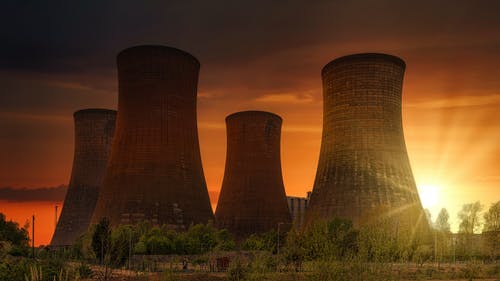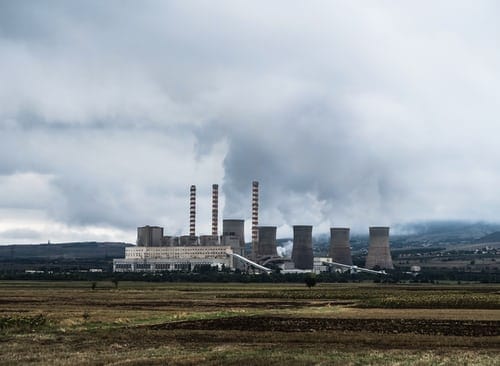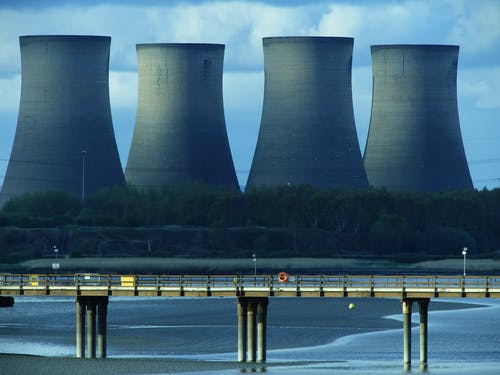Cooling towers are essential for plants and industrial facilities – they are, after all, a cost-effective and energy-efficient way to remove heat from a building. Deciding your facility needs a cooling tower is easy. The hard part is deciding which one.
Marley Flow Control is one of Australia’s leading cooling tower manufacturers, suppliers, and repair technicians. Australian owned and operated, we have the experience to deliver the right solution for your cooling tower needs.
As industry leaders, we have a high level of expertise and can provide a wide range of cooling tower services. Contact our highly experienced team to discuss your options today. Or read on to discover the best cooling tower services for your business.
What is a cooling tower?
A cooling tower is a specialised heat exchanger that allows water and air to combine to cool hot water. During this process, small amounts of water evaporate, lowering the temperature of the water that circulates through the tower.
The purpose of a cooling tower is to reduce the temperature of the circulating hot water from the condenser so it can be used again in the boiler.

How do cooling towers work?
Before we can discuss the different types of coolers available, it’s important to understand how they work.
Water first comes from an inlet of the tower and is pumped up into the header. The header contains nozzles and sprinklers, which sprays the water. Spraying the water helps to increase its surface area – a factor that will be important later.
By now the water is rushing at high speeds and needs to be slowed down. The water then comes to a PVC filling to reduce its flow. Fans at the top of the tower are used to lift air from the bottom to the top.
Now that the water has a large surface area, is flowing slowly, and has access to air, evaporation can occur. This evaporation process is what cools the water.
The water, which is now cooled, is then collected at the bottom of the tower, and re-used in the boiler.
Types of cooling towers
Cooling towers are generally classified into three main groups:
- Build
- Heat transfer methods
- Airflow generation methods
There are several sub-categories of cooling towers within these groups.
Cooling towers by build
Package type
These cooling towers are usually made from a corrosion-free, heat resistant and durable material – like fibreglass-reinforced polyester.
Package type towers are assembled at a factory and smaller than field-erected towers. As they only come in tonnages up to around 1,500 per cell, they are compact enough to be easily transported. This makes them perfect for facilities with low heat rejection requirements – such as hospitals, shopping centres and office buildings.
Field erected
Field erected cooling towers are much larger in size than the packaged type towers, and therefore have a bigger cooling capacity.
These towers are so large they need to be shipped to a facility and assembled on site. Once built, they cannot be transported by truck like the package type towers.
They can also be built according to custom specifications, which is ideal for oil refineries, power and steel processing plants, and petroleum sites.

Cooling towers by heat transfer methods
Dry cooling towers
A dry cooling tower is a great option for facilities where water is limited and where regulation doesn’t allow for any kind of plume.
These towers operate by transferring heat through a surface that separates hot water from ambient air.
Unfortunately, dry cooling towers are perhaps the most inefficient option as they use a lot of energy.
Open circuit cooling towers
Also known as wet cooling towers, these are the most popular as they are cost-effective and renewable.
Open circuit towers use water to cool machinery that has become hot by using the natural process of evaporation. The emissions released by the towers aren’t harmful at all. The ‘waste’, otherwise referred to as drift emissions, is simply heated water droplets.
Closed-circuit cooling towers
Many facilities need a tower that will protect the water from outside contamination. A closed-circuit cooling tower is ideal for this.
Closed-circuit towers, also known as fluid cooling towers, mix water with glycol to form a liquid. This liquid circulates within the tower in a coil, so it is never exposed to the air. The result is a better performing tower with low maintenance requirements.
Airflow generation methods
Natural draft cooling towers
Natural draft cooling towers use the design and shape of the tower to move up the air with fans. They are typically very tall, shaped like a chimney, and made from solid concrete.
They are often located outside, which allows warm air to naturally rise. The air is then released into the environment. These towers can be found at large facilities such as power plants.
Mechanical draft towers
These towers have a propeller or centrifugal fan located at the top of the structure which pulls the air from the side and bottom. Cool and dry air from the outside is then sucked in. Once the air reaches the centre, warm air is blown out the top by the fan.
Mechanical draft towers are far smaller than natural draft towers, so can be placed inside the facilities. The ability to monitor the speed of the fan makes capability control far easier.

Crossflow cooling towers
Unlike other towers, crossflow cooling towers are designed to allow air to flow horizontally, while water streams down vertically. This system requires more air than other towers as it only allows for limited air-to-water contact.
Some crossflow towers advantages are:
- Almost silent operation
- Low pumping head, resulting in lower operational costs
- Easy maintenance
Counterflow cooling towers
Like crossflow towers, counterflow cooling towers also use fans to cool water down.
Hot water enters through the top, while air enters through the bottom. The water is then sprayed out via lateral pipes and splash spray nozzles into a fill. Warm, moist air moves through the fill until it is pushed out the top by the fan.
Find out how we can use our engineering experience to help find the right solution for your business needs. Contact us here for a free quote.
